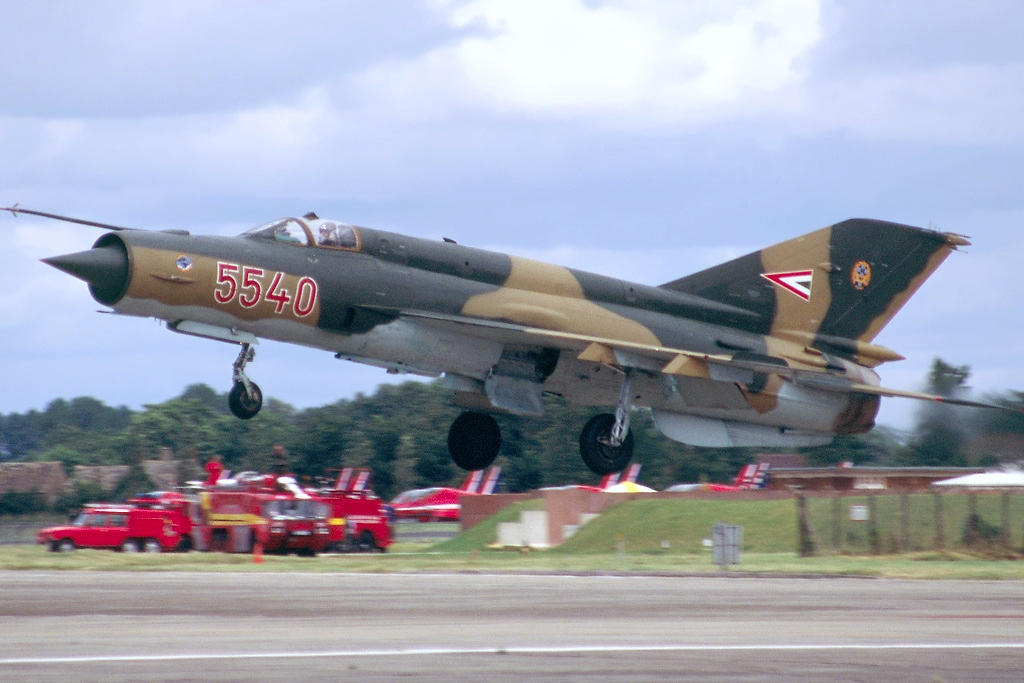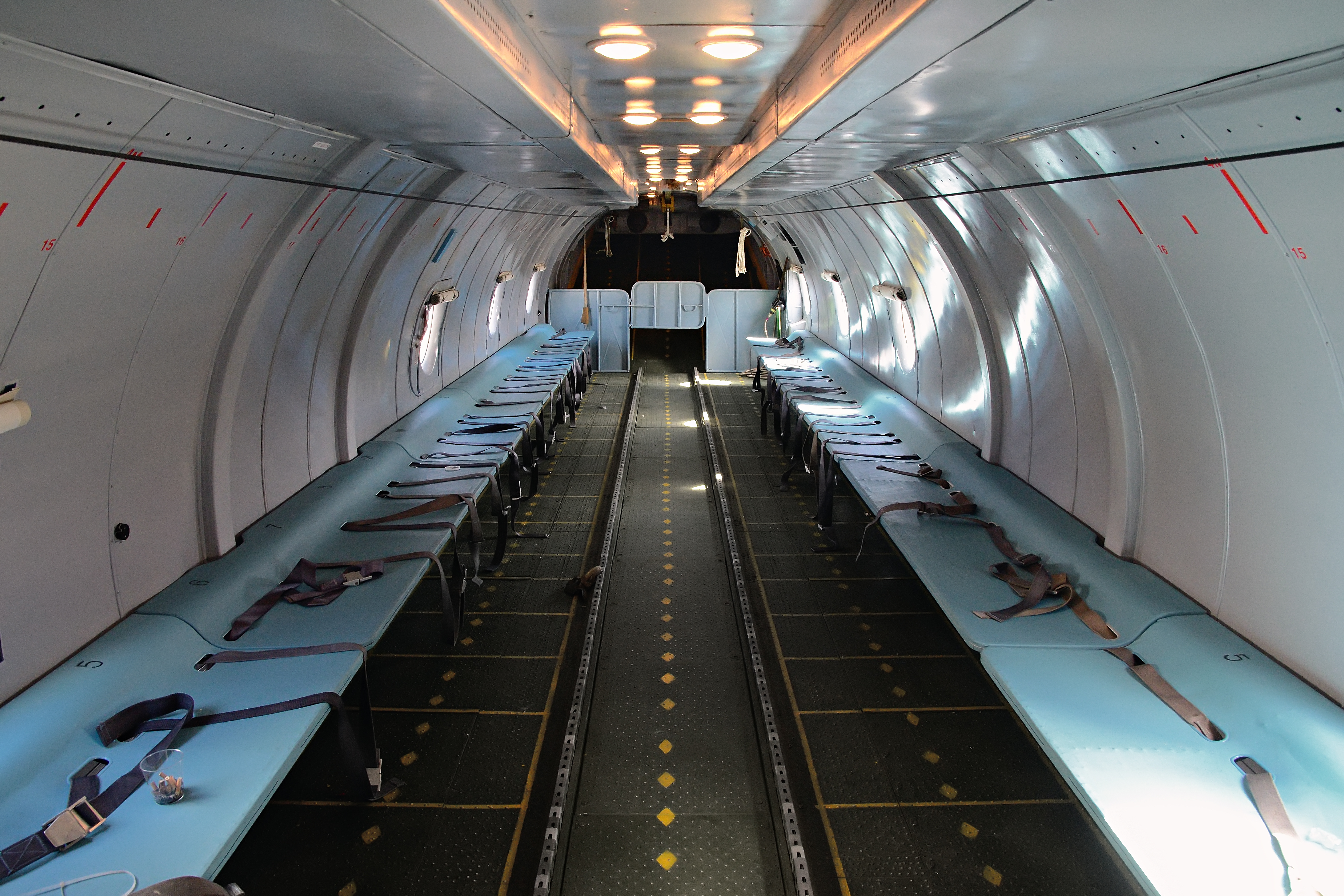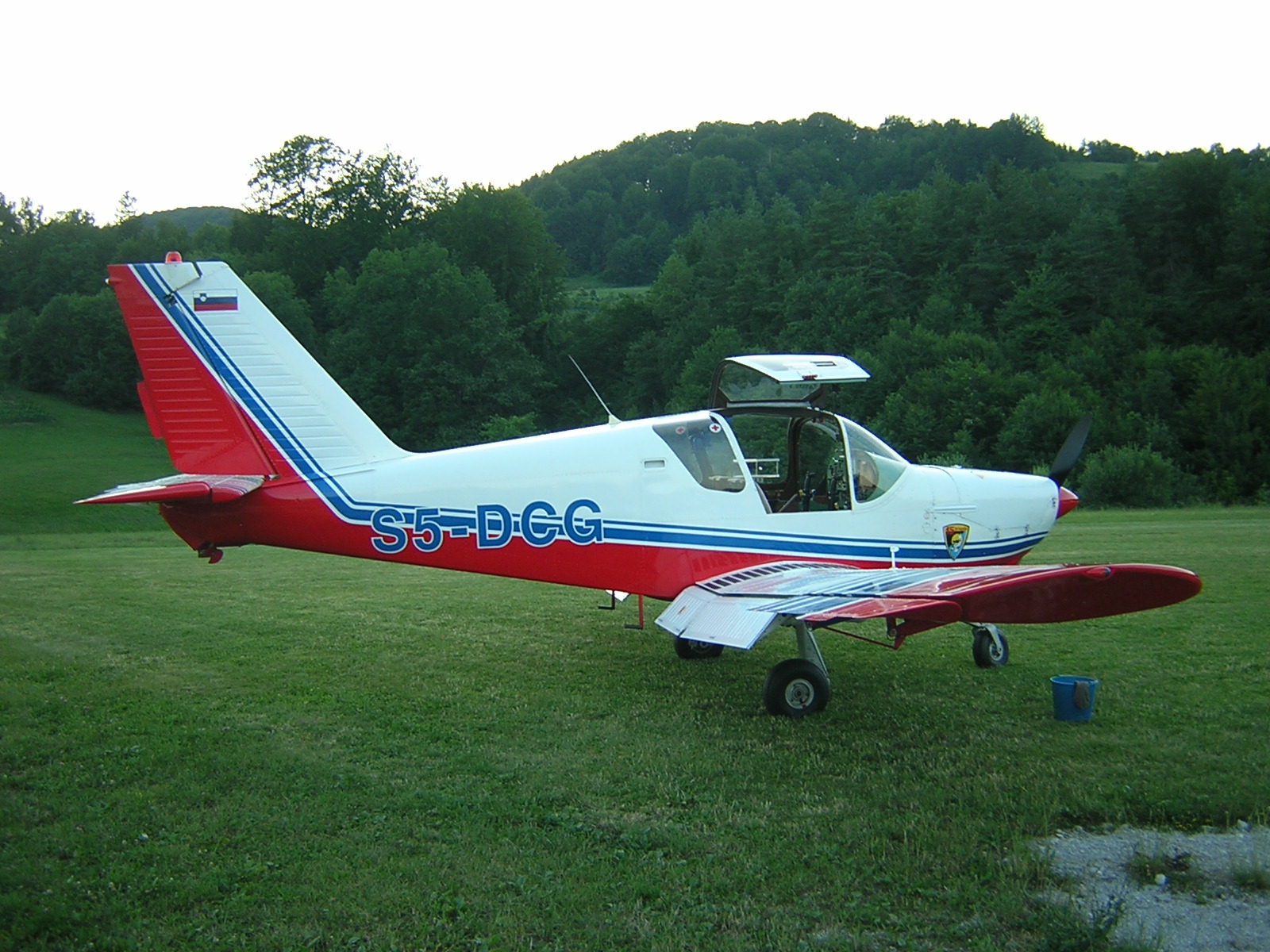|
SFR Yugoslav Air Force
The Air Force and Air Defence ( sh-Cyrl-Latn, Ратно ваздухопловство и противваздушна одбрана, Ratno vazduhoplovstvo i protivvazdušna odbrana ; abbr. sh-Cyrl-Latn, label=none, separator=/, РВ и ПВО, RV i PVO), was one of three branches of the Yugoslav People's Army, the Yugoslav military. Commonly referred-to as the Yugoslav Air Force, at its height it was among the largest in Europe. The branch was disbanded in 1992 after the Breakup of Yugoslavia. In the year 1990, the Air Force had more than 32,000 personnel, but as a result of its more technical requirements, the Air Force had less than 4,000 conscripts. History 1918–1941 World War II, Soviet influence By early 1945, Yugoslav Partisans under Marshal Tito had liberated a large portion of Yugoslav territory from the occupying forces. The NOVJ partisan army included air units trained and equipped by Britain (with Supermarine Spitfires and Hawker Hurricanes, see Balkan Air ... [...More Info...] [...Related Items...] OR: [Wikipedia] [Google] [Baidu] |
1945 In Aviation
This is a list of aviation-related events from 1945: Events * The probe-and-drogue aerial refueling system, in which the tanker aircraft trails a hose with a stabilizing conical drogue at its end which mates to a fixed probe mounted on the receiving aircraft, is perfected. It is superior to and replaces the looped-hose system which had been in use since 1934, and it remains in use today. * With its runways repaired Leningrad′s Shosseynaya Airport (the future Pulkovo Airport) reopens; it had been closed since 1941 because of the proximity of German forces during the Siege of Leningrad. Only cargo and mail flights will take place until February 1948, when scheduled passenger service finally will resume. * Iraqi Airways is founded. It will begin flight operations in January 1946. January * January 1 – The ''Luftwaffe'' targets Allied airfields in Europe in "Operation Bodenplatte", occurring during the German withdrawal from the Battle of the Bulge. * January 2 ** Japanese a ... [...More Info...] [...Related Items...] OR: [Wikipedia] [Google] [Baidu] |
MiG-21
The Mikoyan-Gurevich MiG-21 (russian: Микоян и Гуревич МиГ-21; NATO reporting name: Fishbed) is a supersonic jet fighter and interceptor aircraft, designed by the Mikoyan-Gurevich Design Bureau in the Soviet Union. Its nicknames include: "balalaika", because its planform resembles the stringed musical instrument of the same name; "''Ołówek''", Polish for "pencil", due to the shape of its fuselage, and "''Én Bạc''", meaning "silver swallow", in Vietnamese. Approximately 60 countries across four continents have flown the MiG-21, and it still serves many nations six decades after its maiden flight. It set aviation records, becoming the most-produced supersonic jet aircraft in aviation history, the most-produced combat aircraft since the Korean War and, previously, the longest production run of any combat aircraft (now exceeded by both the McDonnell Douglas F-15 Eagle and General Dynamics F-16 Fighting Falcon). Development Origins The MiG-21 jet fight ... [...More Info...] [...Related Items...] OR: [Wikipedia] [Google] [Baidu] |
Breakup Of Yugoslavia
The breakup of Yugoslavia occurred as a result of a series of political upheavals and conflicts during the early 1990s. After a period of political and economic crisis in the 1980s, constituent republics of the Socialist Federal Republic of Yugoslavia split apart, but the unresolved issues caused bitter inter-ethnic Yugoslav wars. The wars primarily affected Bosnia and Herzegovina, neighbouring parts of Croatia and, some years later, Kosovo. After the Allied victory in World War II, Yugoslavia was set up as a federation of six republics, with borders drawn along ethnic and historical lines: Bosnia and Herzegovina, Croatia, Macedonia, Montenegro, Serbia, and Slovenia. In addition, two autonomous provinces were established within Serbia: Vojvodina and Kosovo. Each of the republics had its own branch of the League of Communists of Yugoslavia party and a ruling elite, and any tensions were solved on the federal level. The Yugoslav model of state organisation, as well as a "middle ... [...More Info...] [...Related Items...] OR: [Wikipedia] [Google] [Baidu] |
Božidar Stefanović
Božidar (Bulgarian, Macedonian, sr-cyr, Божидар, pl, Bożydar, sometimes transliterated as Bojidar, or Bozhidar) is a Slavic given name meaning "Divine gift". It is a calque of the Greek name Theodore, itself derived from the Greek word "Theodoros". Božo is a nickname form of Božidar. People with the name include: *Božidar Adžija (1890–1941), Yugoslav left-wing politician and journalist * Božidar "Boško" Antić (born 1944), Bosnian Serb striker * Božidar Antunović (born 1991), Serbian shot putter *Božidar Bandović (born 1969), Serbian football manager and former player * Božidar Beravs (born 1948), Slovenian ice hockey player * Bozidar Brazda (born 1972), artist, writer, and musician * Božidar Čačić (born 1972), Croatian retired football defender *Božidar Ćosić (born 1982), Serbian professional footballer *Božidar Debenjak (born 1935), Slovenian Marxist philosopher, social theorist and translator *Božidar Delić (born 1956), retired Yugoslav Army gene ... [...More Info...] [...Related Items...] OR: [Wikipedia] [Google] [Baidu] |
Colonel General
Colonel general is a three- or four-star military rank used in some armies. It is particularly associated with Germany, where historically general officer ranks were one grade lower than in the Commonwealth and the United States, and was a rank above full , but below . The rank of colonel general also exists in the armed forces organized along the lines of the Soviet model, where it is comparable to that of a lieutenant general in many NATO armed forces (rank code OF-8). The rank of colonel general that exists within the Arab model () corresponds to a full general (NATO rank code OF-9). Austria Colonel general () was the second-highest rank in the Austro-Hungarian Army, introduced following the German model in 1915. The rank was not used after World War I in the Austrian Army of the Republic. Czechoslovakia The rank of colonel general () was created in the Czechoslovak army in 1950; it was dropped after the 1993 dissolution of the state. Egypt The Egyptian Army uses a r ... [...More Info...] [...Related Items...] OR: [Wikipedia] [Google] [Baidu] |
Mil Mi-8
The Mil Mi-8 (russian: Ми-8, NATO reporting name: Hip) is a medium twin-turbine helicopter, originally designed by the Soviet Union in the 1960s and introduced into the Soviet Air Force in 1968. It is now produced by Russia. In addition to its most common role as a transport helicopter, the Mi-8 is also used as an airborne command post, armed gunship, and reconnaissance platform. Along with the related, more powerful Mil Mi-17, the Mi-8 is among the world's most-produced helicopters, used by over 50 countries. As of 2015, when combined the two helicopters are the third most common operational military aircraft in the world. Design and development Mikhail Mil originally approached the Soviet government with a proposal to design an all-new two-engined turbine helicopter in 1959 after the success of the Mil Mi-4 and the emergence and effectiveness of turbines used in the Mil Mi-6. After design and development, the Mi-8 was subsequently introduced into the Soviet Air For ... [...More Info...] [...Related Items...] OR: [Wikipedia] [Google] [Baidu] |
YAK-40
The Yakovlev Yak-40 (russian: Яковлев Як-40; NATO reporting name: Codling) is a regional jet designed by Yakovlev. The trijet's maiden flight was in 1966, and it was in production from 1967 to 1981. Introduced in September 1968, the Yak-40 has been exported since 1970. Development By the early 1960s, Soviet international and internal trunk routes were served by Aeroflot, the state airline, using jet or turboprop powered airliners, but their local services, many of which operated from grass airfields, were served by obsolete piston-engine aircraft such as the Ilyushin Il-12, Il-14 and Lisunov Li-2.Stroud 1968, p. 269–270. Aeroflot wanted to replace these elderly airliners with a turbine-powered aircraft, with the Yakovlev design bureau being assigned to design it. High speed was not required, but it would have to be able to operate safely and reliably out of poorly equipped airports with short (less than 700 m or 2,300 ft) unpaved runways in poor weather.Gunston ... [...More Info...] [...Related Items...] OR: [Wikipedia] [Google] [Baidu] |
Antonov An-26
The Antonov An-26 ( NATO reporting name: Curl) is a twin-engined turboprop civilian and military transport aircraft, designed and produced in the Soviet Union from 1969 to 1986.Gordon, Yefim. Komissarov, Dmitry & Sergey. "Antonov's Turboprop Twins". Hinkley. Midland. 2003. Development While the An-24T tactical transport had proved successful in supporting Soviet troops in austere locations, its ventral loading hatch restricted the handling of cargo, and in particular vehicles, and made it less effective than hoped in parachuting men and supplies. As a result, interest in a version with a retractable cargo ramp increased, and the Antonov design bureau decided in 1966 to begin development on the new An-26 derivative, in advance of an official order. The cargo ramp was based on that design and allowed the cargo deck to be sealed and pressurised in flight. When loading cargo, it could either be lowered to allow vehicles to be driven in, or slid beneath the aircraft's fuselage, so th ... [...More Info...] [...Related Items...] OR: [Wikipedia] [Google] [Baidu] |
An-2
The Antonov An-2 ("kukuruznik"—corn crop duster; USAF/DoD reporting name Type 22, NATO reporting name Colt) is a Soviet mass-produced single-engine biplane utility/agricultural aircraft designed and manufactured by the Antonov Design Bureau beginning in 1947. Its durability, high lifting power, and ability to take off and land from poor runways have given it a long service life. The An-2 was produced up to 2001 and remains in service with military and civilian operators around the world. The An-2 was designed as a utility aircraft for use in forestry and agriculture, but the basic airframe is highly adaptable and numerous variants of the type have been developed; these include hopper-equipped versions for crop-dusting, scientific versions for atmospheric sampling, water-bombers for fighting forest-fires, flying ambulances, float-equipped seaplane versions and lightly armed combat versions for dropping paratroops.Harpole, Tom"Antonovs in America" [...More Info...] [...Related Items...] OR: [Wikipedia] [Google] [Baidu] |
G-2 Galeb
The Soko G-2 Galeb ( en, Seagull) is a Yugoslav single engine, two-seater jet trainer and light ground-attack aircraft. The G-2 was developed during the 1950s by the Aeronautical Technical Institute at Žarkovo as a replacement for the Lockheed T-33 in service with the Yugoslav Air Force. Production started in 1965 at the Soko aircraft factory in Mostar, and ended in 1985 with 248 aircraft delivered. The G-2 had the distinction of being the first mass-produced jet aircraft in socialist Yugoslavia."Twenty-Sixth SBAC Show... Military Research Aircraft." ''Flight International'', 19 September 1968. p. 450. It also served as a basis for the single-seat ground-attack |
Lola Utva 75
The UTVA 75 is a compact, low-wing monoplane, piston-engine aircraft manufactured by UTVA. It is mainly used as a military basic trainer and sporting aircraft. Development The Utva 75 made its maiden flight in 1976. Between 1978 and 1985, a total of 136 Utva 75s were produced for the former Yugoslav Air Force. Following the breakup of Yugoslavia, many were passed on to successor states. Design Designed in 1975 to replace the UTVA Aero 3 as the primary basic trainer in the Yugoslav Air Force. Utva 75 is low-wing all-metal utility airplane. Wings are cantilever, rectangular with main and aux. wing spar and the integral fuel cells located between them. Dihedral is 6 degrees, NACA65 415 wing section.There is one underwing hardpoint on each wing for dop tanks carriage or additional weapon stores. Landing gear is non-retractable with oleo-pneumatic shock-absorbers. It features upward opening gull-wingtype access doors to the two-seat side-by-side cockpit. Another characteristic ... [...More Info...] [...Related Items...] OR: [Wikipedia] [Google] [Baidu] |
Mil Mi-14
The Mil Mi-14 (russian: Миль Ми-14, NATO reporting name: Haze) is a Soviet shore-based nuclear-capable amphibious anti-submarine helicopter derived from the earlier Mi-8. Design and development Formal development of an anti-submarine warfare (ASW) version of the Mil Mi-8 transport helicopter was authorised by the Soviet Communist Party Central Committee and Council of Ministers in April 1965, with the objective of replacing the Mil Mi-4 in the short-range, shore based anti-submarine role. The new helicopter was required to have an endurance of 2 hours on station at a radius of from base.Mladenov ''Air International'' March 2001, pp. 184–186. The new design (with the internal designation V-14) differed from the Mi-8 in having a boat-like hull similar to the Sea King, allowing it to operate off the water, and a retractable four-point undercarriage, with the mainwheels retracting into large sponsons on the rear of the fuselage. The helicopter was to be powered by two ... [...More Info...] [...Related Items...] OR: [Wikipedia] [Google] [Baidu] |


_Tulpar_Air).jpg)



